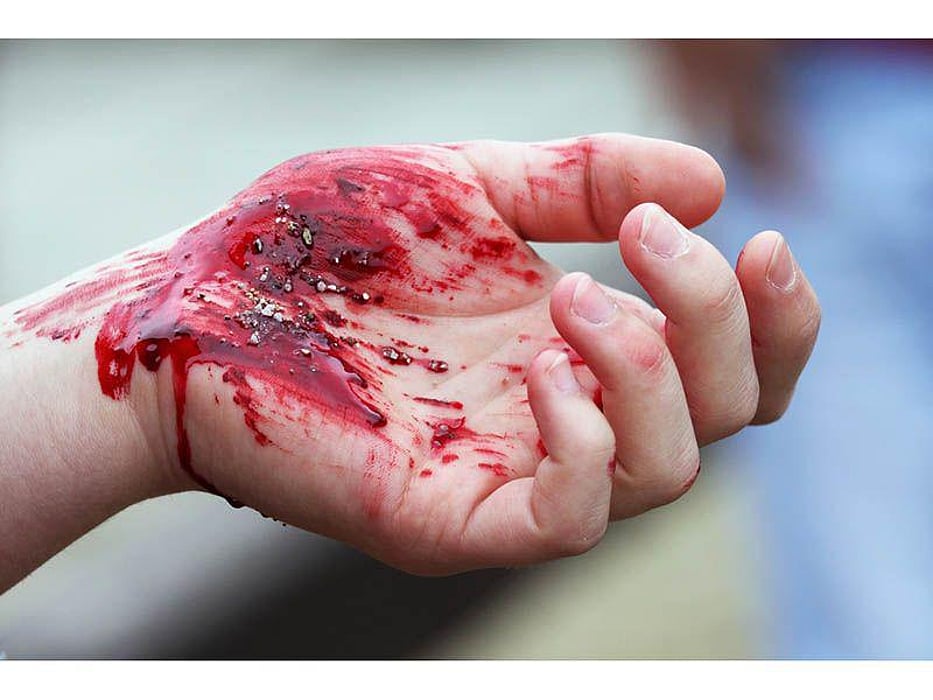Severe Bleeding: What to Do for Your Child

What should I do if my child is bleeding badly?
You'll need to act quickly. If your child has lost consciousness or appears to be in shock, have someone call 911 immediately while you begin first aid. Lay your child down with his feet elevated about 12 inches. This increases blood flow to the brain and reduces the risk of shock. If possible, elevate the site of bleeding, as well; that helps reduce blood flow.
Next, using a sterile bandage or cloth, apply firm pressure directly to the wound. If nothing else is available, use the palm of your hand (after washing your hands, if possible). Maintain steady pressure until the bleeding stops. Don't worry if it takes five minutes for the bleeding to slow or stop. If the wound is still bleeding after five minutes, try to locate the major artery that delivers blood to the area of the injury and apply pressure there. Pressure points are located on the inside of the arm just above the elbow and just below the armpit, just behind the knee, and in the groin. If you apply pressure to these points, do it with one hand while using your other hand to keep direct pressure on the wound.
Once the bleeding stops, leave the bandage or cloth in place. If more blood seeps through, apply another bandage or cloth on top. Don't remove the first bandage; that could cause more bleeding. To maintain pressure, wrap plastic wrap or even duct tape tightly around the bandages and the injured area. If your child is awake and alert, take him to the nearest emergency room as soon as possible. If he's light-headed or woozy, call 911.
Will a tourniquet stop the bleeding?
Yes. But a tourniquet also cuts off blood to the part of the body where it is tied, and that can cause serious injury and intense pain. That's why experts recommend using tourniquets only for the most severe injuries, such as amputations or mangled limbs, and only when no other method will stop the bleeding. In almost all cases, direct pressure to the wound or nearby major artery will stop bleeding.
Further Resources
Robert H. Pantell M.D., James F. Fries M.D., Donald M. Vickery M.D., Taking Care of Your Child: A Parent's Illustrated Guide to Complete Medical Care. Da Capo Press, 7th Edition. 2005.
References
First Aid: How to Stop Severe Bleeding, Mayo Foundation for Medical Education and Research.
Severe Bleeding: First Aid. MayoClinic.com. http://www.mayoclinic.com/health/first-aid-severe-bleeding/
Related Posts
Bedaquiline-Pretomanid-Linezolid Regimens Compared for XDR TB
FRIDAY, Sept. 16, 2022 (HealthDay News) -- For patients with extensively...
Having Kids Around Might Shield You From Severe COVID: Study
MONDAY, Aug. 1, 2022 (HealthDay News) -- Folks with young kids at home may be...
Global Economic Cost of Cancer Estimated to Be $25.2 Trillion From 2020 to 2050
FRIDAY, Feb. 24, 2023 (HealthDay News) -- The estimated global economic cost of...
Nighttime Light Exposure Tied to Cardiovascular Risk Factors in Seniors
FRIDAY, July 8, 2022 (HealthDay News) -- Half of older adults sleep with some...
